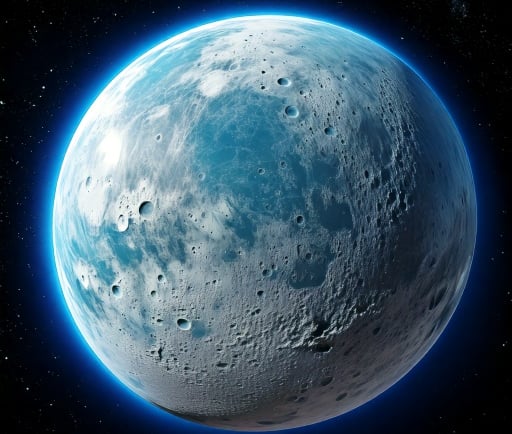The HIP 107772 b: The Sole Ice Giant


Introduction to HIP 107772 b
HIP 107772 b is a fascinating celestial body that has piqued the interest of astronomers and astrophysicists alike. Orbiting a distant star, this exoplanet is classified as an ice giant, exhibiting characteristics that challenge our understanding of planetary formation and composition. Notably, HIP 107772 b boasts a mass greater than ten times that of Earth, solidifying its status as a significant player within its planetary system.
The Composition of HIP 107772 b
One of the most intriguing aspects of HIP 107772 b is its composition. This exoplanet is primarily made up of volatiles such as ammonia, water, and methane. These substances are not only common on ice giants but are also indicative of the processes that occur during planetary formation. The presence of these volatiles suggests that HIP 107772 b may have formed in a colder region of its star system, allowing for the accumulation of such gaseous materials.
Furthermore, the atmosphere of HIP 107772 b remains enveloped by dense hydrogen and helium, akin to the composition of Neptune. This thick atmosphere not only contributes to the planet's overall mass but also plays a pivotal role in its climate systems and atmospheric dynamics. The interactions between the various components in the atmosphere could potentially yield unique weather patterns, similar to those observed on our own ice giant, Uranus.
The Significance of HIP 107772 b in Research
The discovery of HIP 107772 b allows astronomers to broaden their understanding of exoplanets, particularly those that share characteristics with the gas giants within our own solar system. Studying such planets can provide invaluable insights into the conditions conducive to planetary formation and the potential for habitable worlds beyond Earth.
Moreover, as the only orbiter in its system, HIP 107772 b may offer researchers a unique opportunity to explore the dynamics of an isolated planetary environment. This isolation raises questions about the evolutionary history of the planet and whether it captured or retained its volatiles over time. Investigating these questions will enhance our comprehension of diverse planetary systems throughout the galaxy.
In conclusion, HIP 107772 b represents a captivating subject for astronomical exploration. Its characteristics as an ice giant with volatiles such as ammonia, water, and methane provide a window into the complexities of planetary formation. The composition and atmospheric dynamics of HIP 107772 b mirror our ice giants, pushing the boundaries of our knowledge about exoplanets in distant star systems. Future studies hold the promise of uncovering even more mysteries related to this distant world and its role within the cosmos.
